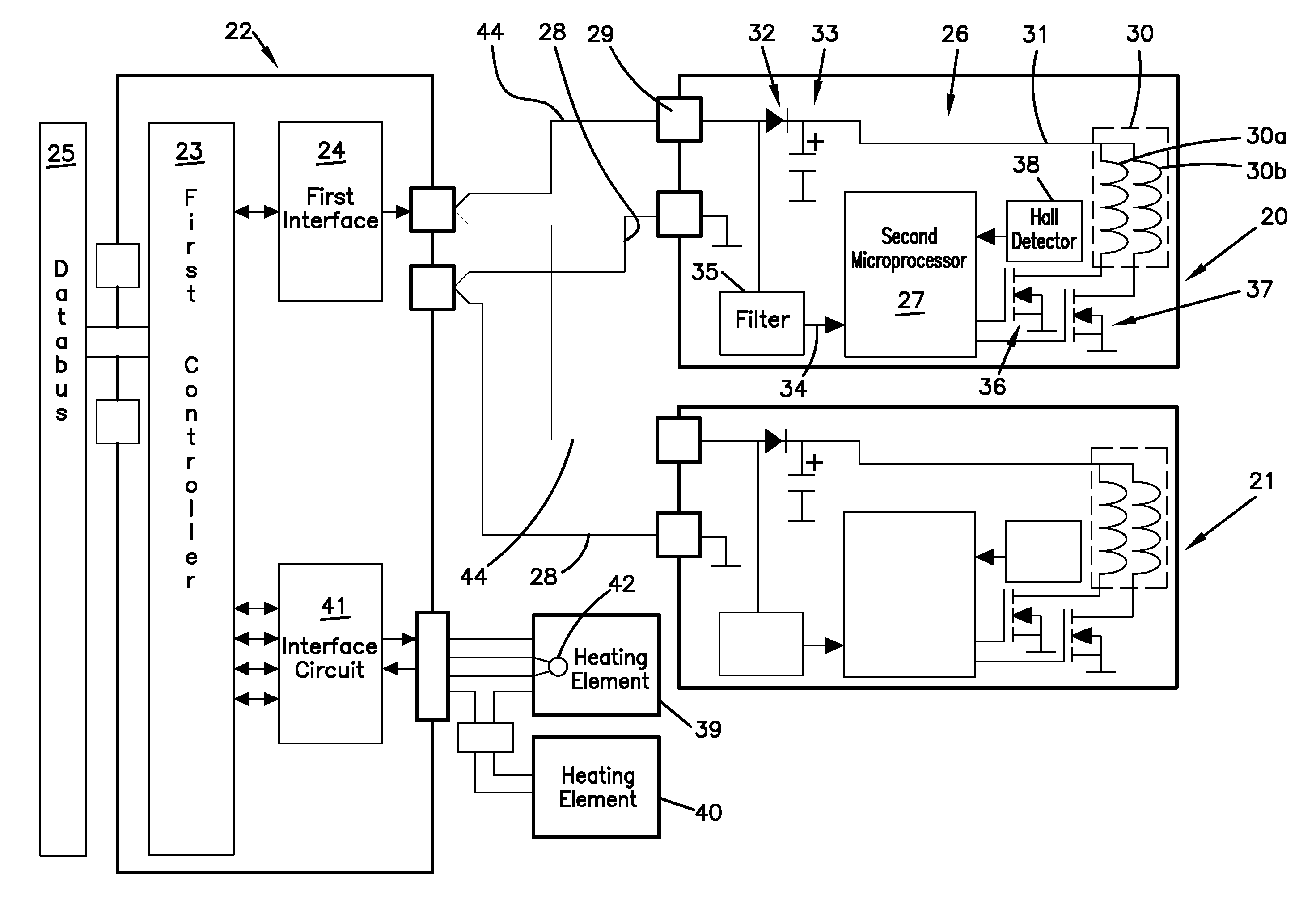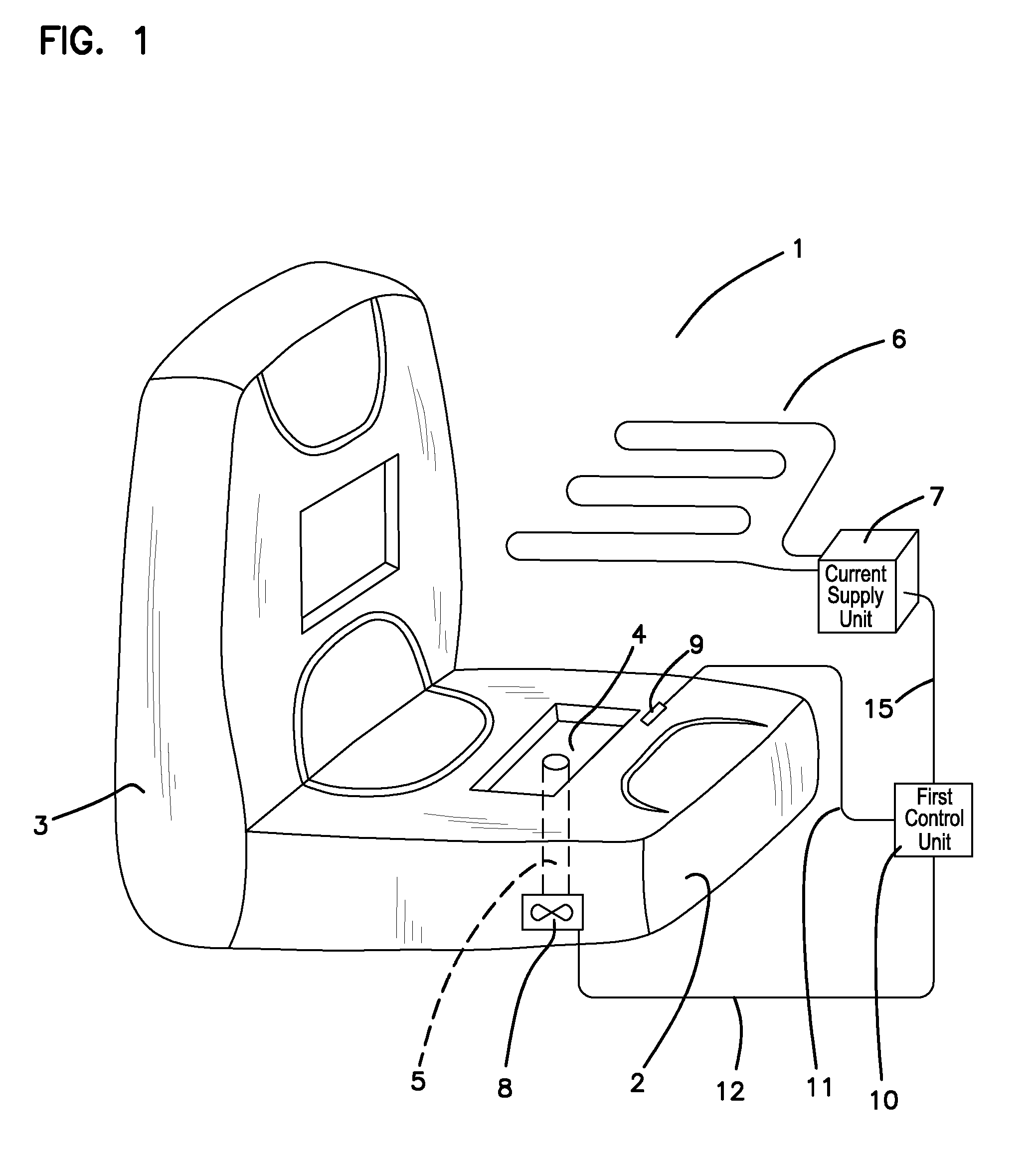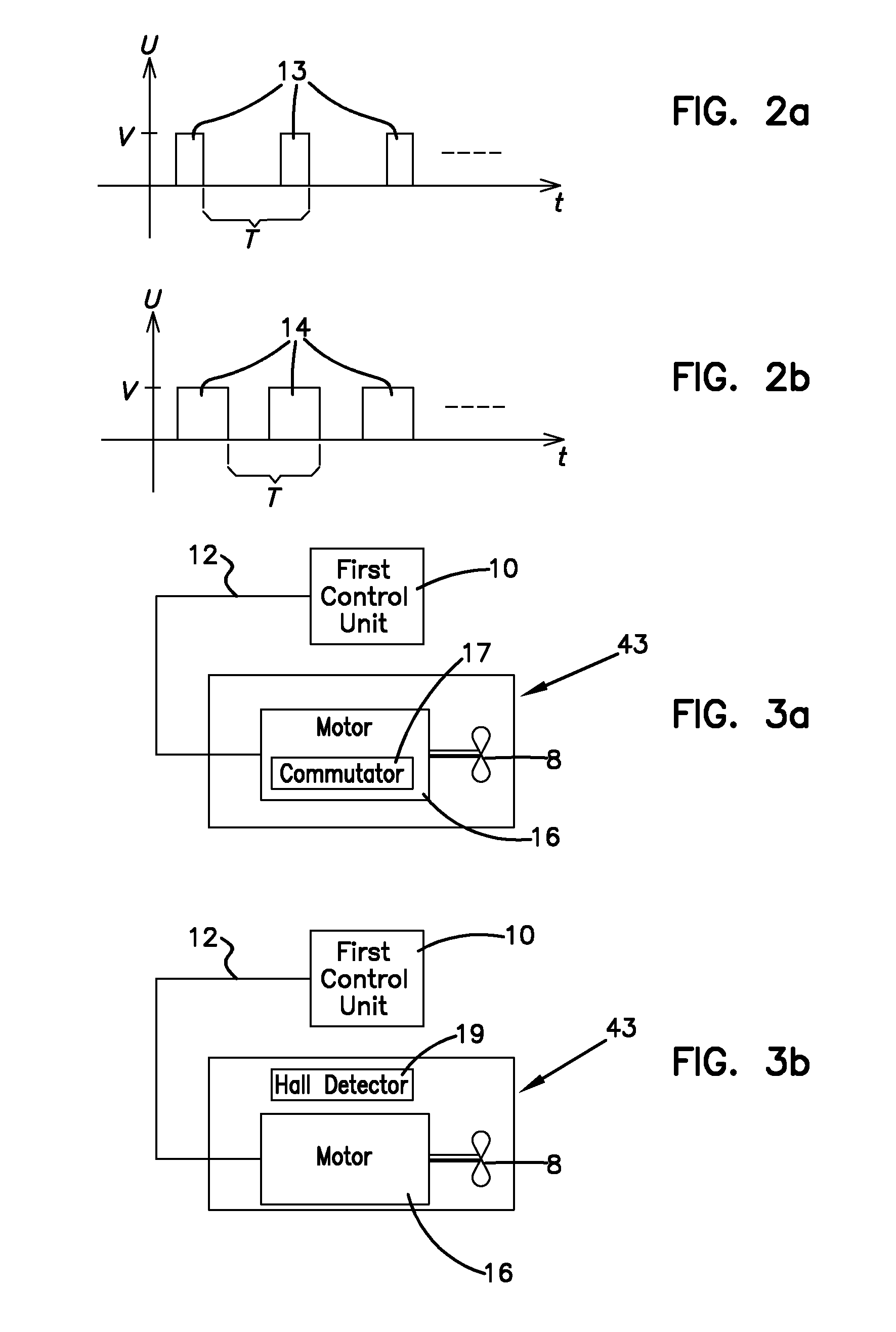Method and arrangement for control of direct current motor
a direct current motor and control method technology, applied in the direction of vehicle seats, dynamo-electric motors/converters, starters, etc., can solve the problems of inability to precisely control the fan, the difficulty of accurately controlling the temperature on the seat surface, and the rise of audible dissonance from the motor
- Summary
- Abstract
- Description
- Claims
- Application Information
AI Technical Summary
Benefits of technology
Problems solved by technology
Method used
Image
Examples
Embodiment Construction
[0029]The present invention will now be described in greater detail, firstly with reference to FIG. 1.
[0030]For increased comfort, the seat cushion 2 and seat back 3 of a vehicle seat 1 can be equipped for ventilation and temperature control of the surfaces or areas upon which a driver or passenger in the vehicle is expected to sit. In the following, the seat cushion 2 will be described, but a corresponding description can, of course, apply for the seat back 3. In a vehicle, both the driver's seat and the other seats can be equipped for ventilation by blowing or extraction of air. The blown or extracted air is distributed via at least one opening 4 that is arranged in the seat cushion 2. In the case of the blowing of air, this blown air is led through a duct 5 in the seat cushion 2 and out towards the person who is sitting on the seat in question, via the distributing opening 4. In the case of the extraction of air, this extracted air is led away from the person who is sitting on th...
PUM
 Login to View More
Login to View More Abstract
Description
Claims
Application Information
 Login to View More
Login to View More - R&D
- Intellectual Property
- Life Sciences
- Materials
- Tech Scout
- Unparalleled Data Quality
- Higher Quality Content
- 60% Fewer Hallucinations
Browse by: Latest US Patents, China's latest patents, Technical Efficacy Thesaurus, Application Domain, Technology Topic, Popular Technical Reports.
© 2025 PatSnap. All rights reserved.Legal|Privacy policy|Modern Slavery Act Transparency Statement|Sitemap|About US| Contact US: help@patsnap.com



